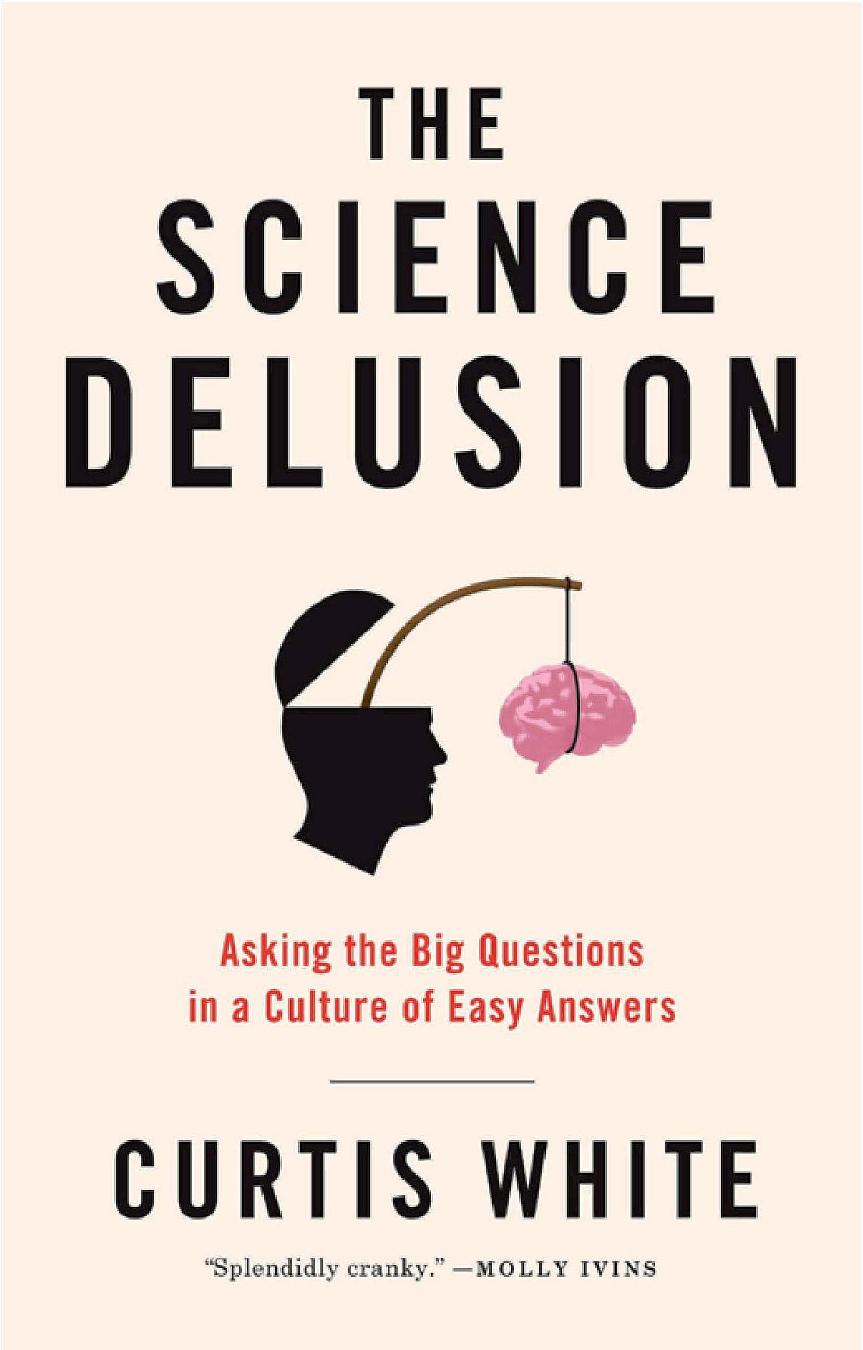The Science Delusion by Curtis White

Author:Curtis White
Language: eng
Format: mobi, pdf
ISBN: 9781612192017
Publisher: Melville House
Published: 2013-05-27T21:00:00+00:00
IV. THIS BIT OF NEURAL MATTER
“We (the undivided divinity operating within us) have dreamt the world. We have dreamt it as firm, mysterious, visible, ubiquitous in space and durable in time; but in its architecture we have allowed tenuous and eternal crevices of unreason which tell us it is false.”
—Jorge Luis Borges
Freed at last from the limits imposed by religion, science has extended its ambitions beyond the debunking of Christian dogma. It has now turned its attention to another old competitor, the secular world of the humanities and the arts. This second front in the American culture war has its roots in the decades just after the Enlightenment era, especially in the quickly-matured world of post-Enlightenment scientism led by “Darwin’s bulldog,” Thomas H. Huxley. It was Huxley who first sought to describe human mental characteristics, including emotions and social organization, as neurological aspects of evolution.
The recent works I will look at all contend in one way or another that now that science has finished with the last vestiges of religious thought and answered its last objection to the scientific worldview (“why is there something rather than nothing?”), they are free to investigate the artists and all of their delusions about human consciousness and the human capacity for creativity. After all, science contends, art has its own gospel of revelation—the quasi-spiritual experience of “inspiration”—and its own messiah: the genius.
Steven Pinker claims in his widely cited book How the Mind Works that the mind is a “biologically selected neural computer.” He writes:
I want to convince you that our minds are not animated by some godly vapor or single wonder principle. The mind, like the Apollo spacecraft, is designed to solve many engineering problems, and thus is packed with high-tech systems each contrived to overcome its own obstacles. (4)
And this is just prelude to his later conclusion that art is a “biologically frivolous and vain” activity interested only in critical obscurantism, social status, and the tickling of the brain’s dopamine reward system (like cheesecake).
The idea that creativity is a problem for scientists, not poets, is frequently made in the New York Times “Science Times.” There we find the (often droll) attempt to mechanize consciousness and creativity by laying out its relation to areas of the brain and to chemicals, especially neurotransmitters. Of particular interest at the moment is the neuroscience of creativity. Some scientists now claim to know what parts of the brain are responsible for it, and, using fMRI technology, they can even show it to us in the very act of creation, the brain in genius mode, all lit up like a conch shell with a little Christmas light inside.
The problem is that they haven’t said a word about the most ordinary aspect of their work: what is creativity? Or, at least, how are they using the word? So:
“What are you researching?”
“Creativity.”
“What do you mean by creativity?”
“You know, creativity. We’ve found the part of the brain that is its origin.”
“Yeah, but what do you mean by creativity?”
“Like, you know, coming up with the answers to crossword puzzles.
Download
This site does not store any files on its server. We only index and link to content provided by other sites. Please contact the content providers to delete copyright contents if any and email us, we'll remove relevant links or contents immediately.
| Anthropology | Archaeology |
| Philosophy | Politics & Government |
| Social Sciences | Sociology |
| Women's Studies |
The remains of the day by Kazuo Ishiguro(8885)
Tools of Titans by Timothy Ferriss(8297)
Giovanni's Room by James Baldwin(7241)
The Black Swan by Nassim Nicholas Taleb(7050)
Inner Engineering: A Yogi's Guide to Joy by Sadhguru(6749)
The Way of Zen by Alan W. Watts(6544)
Asking the Right Questions: A Guide to Critical Thinking by M. Neil Browne & Stuart M. Keeley(5704)
The Power of Now: A Guide to Spiritual Enlightenment by Eckhart Tolle(5671)
The Six Wives Of Henry VIII (WOMEN IN HISTORY) by Fraser Antonia(5452)
Astrophysics for People in a Hurry by Neil DeGrasse Tyson(5149)
Housekeeping by Marilynne Robinson(4389)
12 Rules for Life by Jordan B. Peterson(4271)
Double Down (Diary of a Wimpy Kid Book 11) by Jeff Kinney(4238)
The Ethical Slut by Janet W. Hardy(4206)
Skin in the Game by Nassim Nicholas Taleb(4198)
Ikigai by Héctor García & Francesc Miralles(4162)
The Art of Happiness by The Dalai Lama(4087)
Skin in the Game: Hidden Asymmetries in Daily Life by Nassim Nicholas Taleb(3959)
Walking by Henry David Thoreau(3919)
